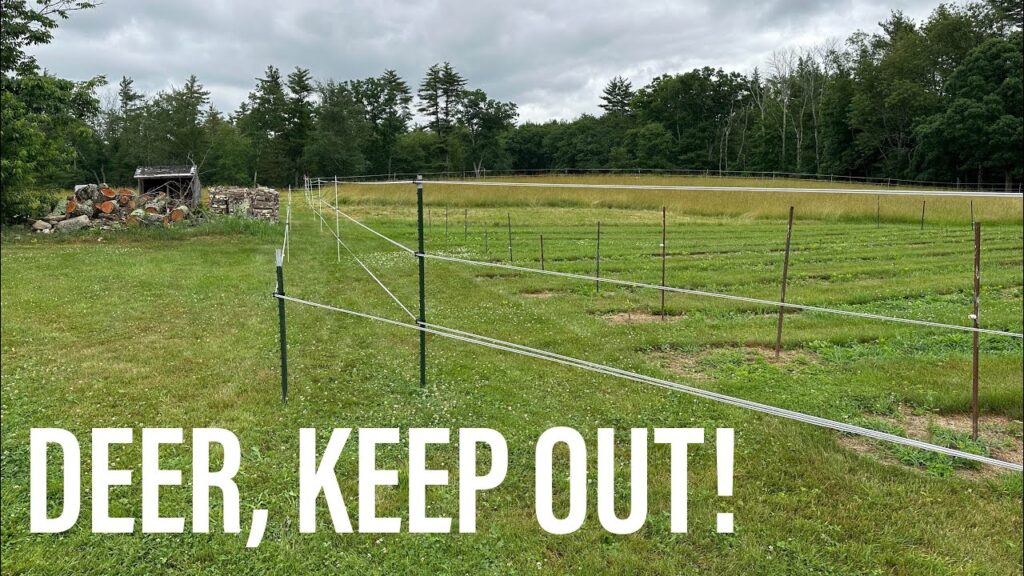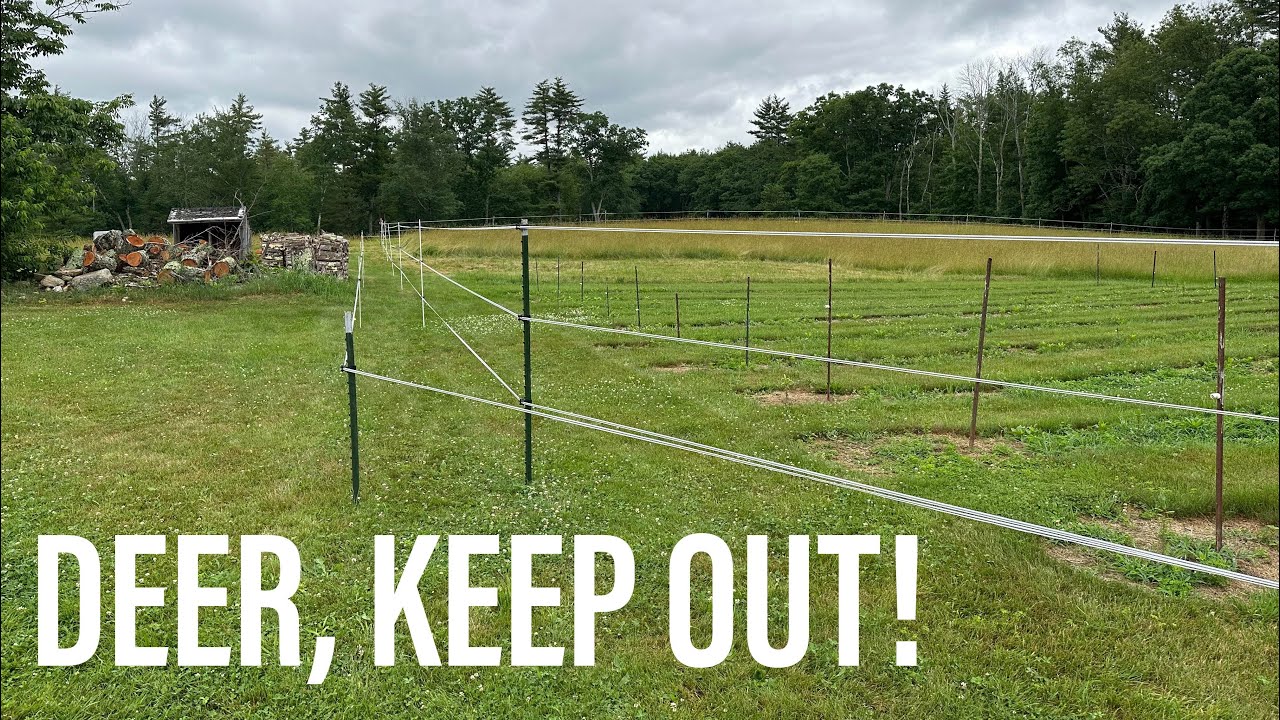
Dr. Deer Electric Fence: A Comprehensive Guide to Deer Deterrence
Deer, with their graceful presence, can quickly become a nuisance to gardens, orchards, and agricultural lands. Their voracious appetites can decimate crops and ornamental plants, causing significant economic losses and aesthetic damage. While various deer deterrent methods exist, the Dr. Deer electric fence stands out as a highly effective and humane solution. This comprehensive guide explores the intricacies of Dr. Deer electric fences, covering their benefits, installation, maintenance, and best practices for ensuring optimal deer deterrence.
Understanding the Need for Deer Deterrence
Before delving into the specifics of Dr. Deer electric fences, it’s crucial to understand the motivations behind deer deterrence. Deer are opportunistic feeders, driven by their need for sustenance. In suburban and rural areas, cultivated plants often provide a more readily available and nutritious food source than natural forage. This leads to deer becoming accustomed to feeding in these areas, creating a persistent problem for homeowners and farmers alike. The damage inflicted by deer can range from nibbled flowerbeds to completely stripped orchards, highlighting the importance of effective deterrent strategies.
Why Choose a Dr. Deer Electric Fence?
Numerous deer deterrents are available, including repellents, physical barriers, and scare tactics. However, Dr. Deer electric fences offer several distinct advantages:
- Effectiveness: Electric fences deliver a mild, yet memorable shock that conditions deer to avoid the protected area. This is a far more reliable deterrent than scent-based repellents, which can lose their effectiveness over time.
- Humane: When properly installed and maintained, Dr. Deer electric fences do not harm deer. The shock is designed to be unpleasant, not dangerous. It teaches deer to associate the fence with a negative experience, prompting them to seek food elsewhere.
- Cost-Effective: While the initial investment in an electric fence may be higher than some other deterrents, the long-term cost-effectiveness is significant. Electric fences require minimal maintenance and offer lasting protection, reducing the need for repeated applications of repellents or replacement of damaged plants.
- Versatility: Dr. Deer electric fences can be adapted to protect various areas, from small gardens to large agricultural fields. The height and configuration of the fence can be adjusted to suit the specific needs of the property.
Components of a Dr. Deer Electric Fence
A typical Dr. Deer electric fence system consists of several key components:
- Energizer: The energizer is the heart of the system, generating the high-voltage pulse that delivers the shock. Energizers are available in various sizes and power outputs, depending on the length of the fence and the density of vegetation. Solar-powered energizers are a popular choice for remote locations.
- Fence Wire: The fence wire carries the electrical pulse along the perimeter of the protected area. High-tensile wire is recommended for deer fences, as it is strong and durable. Poly wire or poly tape are also options, offering greater visibility.
- Posts: Posts support the fence wire and maintain the proper spacing. Wood posts, metal T-posts, or fiberglass posts can be used, depending on soil conditions and aesthetic preferences.
- Insulators: Insulators prevent the electrical current from grounding out through the posts. They are essential for ensuring that the full voltage is delivered to the fence wire.
- Grounding System: A proper grounding system is crucial for the effective operation of the electric fence. Ground rods are driven into the ground and connected to the energizer, providing a path for the electrical current to return to the energizer after delivering the shock.
- Gate System: A gate system allows access to the protected area without compromising the integrity of the fence. Gate handles and gate kits are available to create secure and convenient entry points.
Installing a Dr. Deer Electric Fence: A Step-by-Step Guide
Proper installation is essential for the effectiveness of a Dr. Deer electric fence. The following steps provide a general guide:
- Plan the Fence Layout: Determine the area you want to protect and map out the fence line. Consider the terrain, vegetation, and potential deer entry points.
- Install Posts: Space the posts evenly along the fence line, typically 8-12 feet apart. Ensure that the posts are securely anchored in the ground.
- Attach Insulators: Attach insulators to the posts at the appropriate height for deer. A typical deer fence has multiple strands of wire, spaced 10-12 inches apart.
- String the Fence Wire: Run the fence wire through the insulators, maintaining tension to prevent sagging. Use wire tensioners to adjust the tension as needed.
- Install the Energizer: Mount the energizer in a secure location, protected from the elements. Connect the energizer to the fence wire and the grounding system.
- Test the Fence: Use a fence tester to verify that the fence is delivering the appropriate voltage. Adjust the energizer settings as needed.
- Clear Vegetation: Keep vegetation clear of the fence wire to prevent grounding out. Regularly mow or trim grass and weeds along the fence line.
Maintaining Your Dr. Deer Electric Fence
Regular maintenance is crucial for ensuring the long-term effectiveness of your Dr. Deer electric fence. Key maintenance tasks include:
- Check the Voltage: Regularly check the fence voltage with a fence tester to ensure that it is within the recommended range.
- Inspect the Fence Wire: Inspect the fence wire for damage or breaks. Repair any damaged sections promptly.
- Clear Vegetation: Keep vegetation clear of the fence wire to prevent grounding out.
- Maintain the Grounding System: Ensure that the grounding system is properly connected and that the ground rods are securely in the ground.
- Check the Energizer: Inspect the energizer for any signs of damage or malfunction. Replace the energizer if necessary.
- Battery Maintenance (for Solar Energizers): Periodically check the battery charge level of solar-powered energizers and replace the battery as needed.
Tips for Maximizing Deer Deterrence with Dr. Deer Electric Fences
To maximize the effectiveness of your Dr. Deer electric fence, consider the following tips:
- Use Multiple Strands of Wire: Multiple strands of wire, spaced at different heights, provide more comprehensive protection against deer of all sizes.
- Bait the Fence: Initially, bait the fence with peanut butter or apple slices to attract deer and ensure they receive a shock.
- Consider a Slanted Fence: A slanted fence, with the bottom wire angled outwards, can be more effective at deterring deer from jumping over the fence.
- Use Visual Deterrents: Combine the electric fence with visual deterrents, such as flagging or reflective tape, to further discourage deer from approaching the area.
- Monitor Deer Activity: Regularly monitor deer activity around the fence to identify any potential weaknesses or areas where deer are attempting to breach the fence.
Addressing Common Concerns About Dr. Deer Electric Fences
Some common concerns about Dr. Deer electric fences include:
- Safety for Humans and Pets: While the shock from an electric fence can be unpleasant, it is generally not dangerous to humans or pets. However, it is important to exercise caution and avoid contact with the fence wire. Consider posting warning signs to alert others to the presence of the electric fence.
- Aesthetic Impact: Some people are concerned about the aesthetic impact of electric fences. However, modern electric fences can be designed to be relatively unobtrusive. Using thinner wire and strategically placing posts can minimize the visual impact.
- Cost: The initial cost of an electric fence can be a barrier for some. However, the long-term cost-effectiveness of electric fences often outweighs the initial investment. Consider the cost of alternative deterrents, such as repellents, and the potential losses from deer damage when evaluating the cost of an electric fence.
The Future of Deer Deterrence: Innovations in Electric Fence Technology
The technology behind Dr. Deer electric fences continues to evolve, with ongoing innovations aimed at improving effectiveness, ease of use, and safety. Some emerging trends include:
- Smart Energizers: Smart energizers offer advanced features, such as remote monitoring and control, automatic voltage adjustment, and integrated alarm systems.
- Improved Wire Materials: New wire materials are being developed that offer greater strength, durability, and conductivity.
- Wireless Fence Systems: Wireless fence systems eliminate the need for physical fence wire, offering greater flexibility and ease of installation.
In conclusion, a Dr. Deer electric fence is a highly effective and humane solution for deterring deer from gardens, orchards, and agricultural lands. By understanding the components of the system, following proper installation and maintenance procedures, and implementing best practices for deer deterrence, you can protect your property from deer damage and enjoy the peace of mind that comes with knowing your plants are safe. [See also: Deer Repellent Options: A Comparative Analysis] and [See also: Protecting Your Garden from Wildlife: A Guide to Humane Deterrents]. Investing in a Dr. Deer electric fence is an investment in the long-term health and beauty of your landscape.

